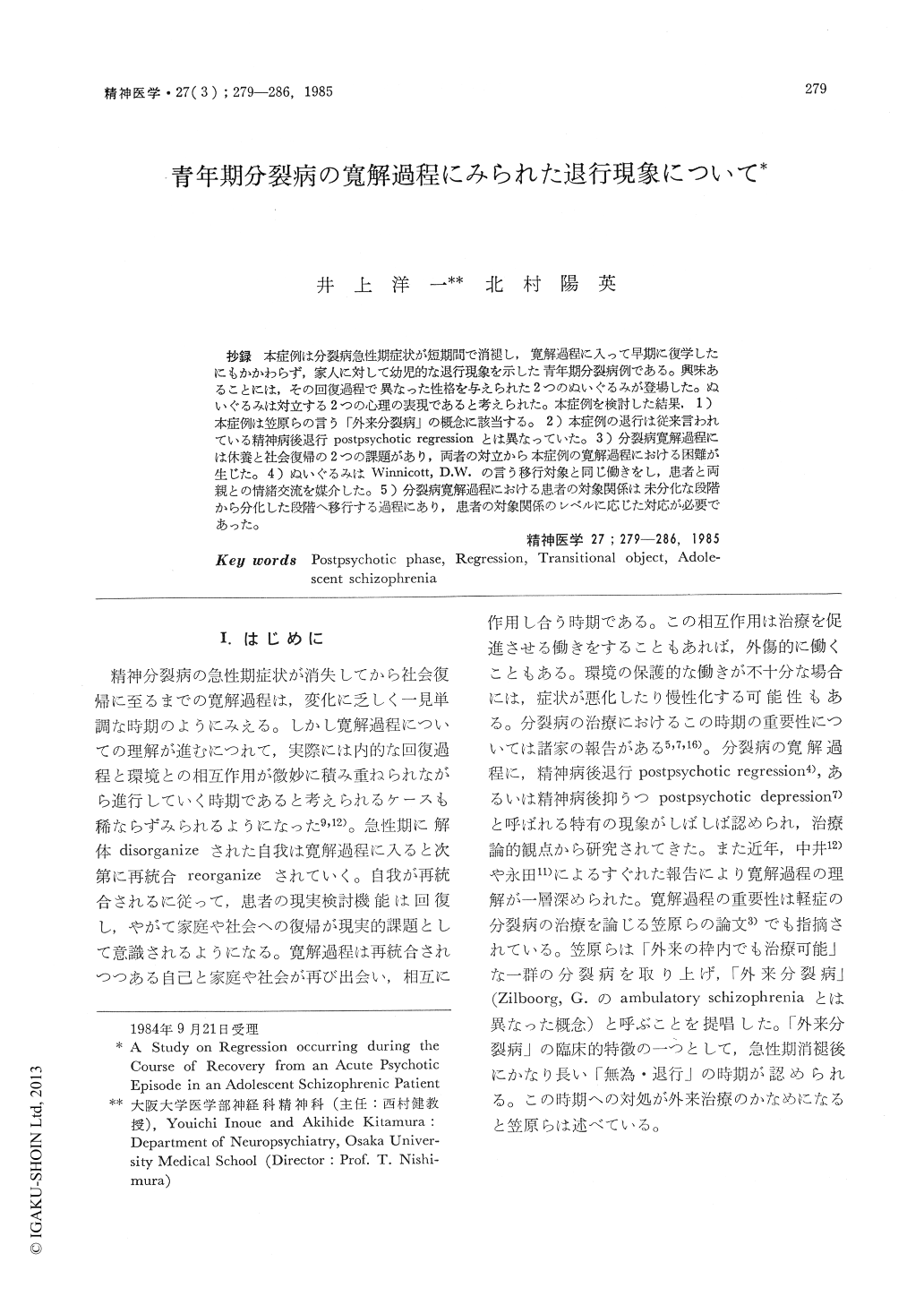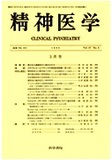Japanese
English
- 有料閲覧
- Abstract 文献概要
- 1ページ目 Look Inside
- サイト内被引用 Cited by
抄録 本症例は分裂病急性期症状が短期間で消褪し,寛解過程に入って早期に復学したにもかかわらず,家人に対して幼児的な退行現象を示した青年期分裂病例である。興味あることには,その回復過程で異なった性格を与えられた2つのぬいぐるみが登場した。ぬいぐるみは対立する2つの心理の表現であると考えられた。本症例を検討した結果,1)本症例は笠原らの言う「外来分裂病」の概念に該当する。2)本症例の退行は従来言われている精神病後退行postpsychotic regressionとは異なっていた。3)分裂病寛解過程には休養と社会復帰の2つの課題があり,両者の対立から本症例の寛解過程における困難が生じた。4)ぬいぐるみはWinnicott, D. W. の言う移行対象と同じ働きをし,患者と両親との情緒交流を媒介した。5)分裂病寛解過程における患者の対象関係は未分化な段階から分化した段階へ移行する過程にあり,患者の対象関係のレベルに応じた対応が必要であった。
1. This case comes under the category of "ambulatory schizophrenia" by which Kasahara et al. mean schizophrenia treatable in ambulatory clinic. 2. The term postpsychotic regression usually stands for postpsychotic exhausted state. In contrast, the regression in this particular case presented was different from usual post-psychotic regression. It is because, occurring during the course of rehabilitation, the patient was able to overcome critical situations. 3. Aggressive behavior occurred toward the patient's family, when her needs for dependency were frustrated, or when she was overloaded with social tasks. The patient could not control her aggression, nor could she obtain emotional stability by herself. All she could do was to depend totally upon her family. From object relational view-point, self and object were not differentiated. 4. Two stuffed dolls expressed her two incompatible needs which she could not integrate by herself. In the course of recovery from psychotic episode, the patient had to meet two tasks. One task expressed through one of the two dolls was to rest in a cared-for environment, and the other expressed through the second doll was to involve herself into social activity. 5. Two stuffed dolls played the same role as the "transitional object" of Winnicott, D.W. The appearance of the two stuffed dolls on the scene showed transition of her object relation from one-body relationship to two-body relationship. In the course of recovery from acute psychotic episode, object relation developed from undifferentiated state to more differentiated state. Consequently, the treatment of this patient was in tune with the object relation theory. The patient was treated according to her object relation level. 6. The patient was put in a crucial situation, because she had started social activity without getting rid of the symptoms belonging to the first half of the recovery phase of Nakai's classification.

Copyright © 1985, Igaku-Shoin Ltd. All rights reserved.


